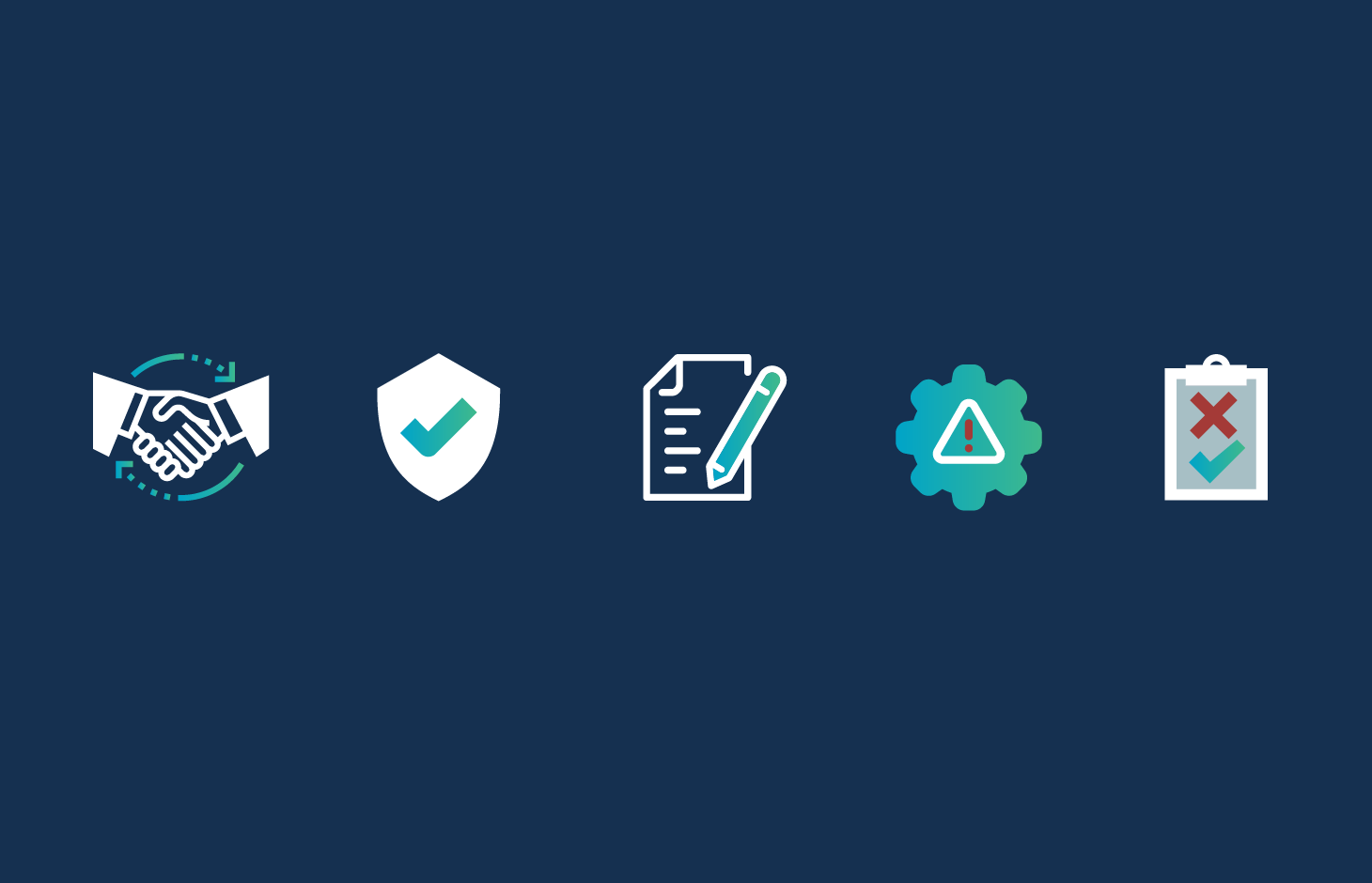We understand that EOFY reporting is a busy time for every business owner and accountant.
Having systems and techniques in place to make life easier is something your trusted Insurance Adviser can help you with.
Here we share some key tips for preparing your business for the end of the financial year.
- Prepare your paperwork for the ATO
- Ensure all records are up to date
- Delegate tasks to key personnel
- Utilise systems with automation to save time
- Maximise your deductions
- Check your superannuation
- Plan in advance of the submission dates.
More details on each below.

Prepare Your Paperwork for The ATO
If you want to avoid any stressful delays or hiccups, it's important to get your paperwork in order well before EOFY for the Australian Taxation Office (ATO).
At the end of the financial year, the ATO will be processing a lot of paperwork from businesses all over Australia, so the more organised you are, the better.
Try some of the following for preparing your end-of-financial year 2022 accounts:
Work in advance - Gather all relevant documents, including income statements, balance sheets, invoices, receipts, and tax returns from the previous financial year.
Utilise systems - Processes take time to set up but can be invaluable in bringing these documents together as the year progresses so that you have a simple single point of collated documents and details.
Update your inventory records - Then reconcile them with your financial statements. This will ensure that you have an accurate picture of what you own and owe and the value of your assets.
Review your business insurance policy - We can help with this, so reach out to your local insurance adviser to help make sure that it is still relevant and provides adequate coverage for your business.
Perform an EOFY Stocktake
The end of the financial year (EOFY) falls on June 30. For businesses, this is a time to do a stocktake and assess how the past year has gone.
An EOFY stocktake can be as simple as counting the number of products you have in stock and comparing it to your records. This will help you to identify any discrepancies and make sure that your inventory is accurate.
Keep EOFY stocktake as simple as possible - Where you find discrepancies along the way, put them to one side to be dealt with later. So you can focus now on the bulk of the task. Here's the simple approach.
Simplify EOFY Checklist to key points
- Check your records and make sure that all items are accounted for;
- Count the number of each item in stock;
- Compare the numbers to your records; and
- Identify any discrepancies and investigate the cause.

Take an all-hands-on-deck approach - Stocktaking can be completed far quicker when you can bring numbers to the game. Where possible, pull staff from other business areas to spend a day or so counting or providing admin during the count. This will reduce the burden on your core stocktaking team and allow you to complete the exercise in a shorter time frame.
Invest in new technology - Many pieces of technology available can automate stocktaking tasks or make them quicker and easier. From hand-held scanners that log items as they're counted through to software that can streamline your record keeping as you go.
Run down stocks beforehand - Having less inventory means there is less to count! So even months in advance, consider which stocks you can bring down to a minimum to lessen the bulk of the task.
Once your workflow is in place, it's also an opportunity to take a macro view in terms of your overall business processes.
Manage Your Deductions
Deductions are important and are often overlooked when it comes to the end of financial year accounts. Reviewing your business deductions can help you maximise your tax return and set you up for a successful year ahead.
Here are some practices to keep ahead when managing your deductions:
Collate your documentation - Similar to your ATO paperwork, ensure you have all the necessary receipts and documentation in advance.
Tracking your spending - Keep track of your spending throughout the year so you're not scrambling to find receipts at the end of financial year tasks.
Know what you can and can't claim - Make sure you understand what business expenses are tax-deductible.
Keep records of your asset purchases - If you've made any big-ticket purchases for your business, make sure you keep all the relevant documentation in the same one-stop place for quick assessment and submission.
These are just a few tips to help you maximise your deductions for the end-of-financial year checklist. Speak to the right insurance adviser who can help with insurance for these areas.
Review the COVID-19 Relief Packages
It's worth noting that there is Covid support for small businesses and sole traders, depending on where you are in Australia.
Tap into available resources - When times are hard, you need to gain support from wherever you can to keep your business operating. During the pandemic, resources have become available that you can use.
Bring external experts on board - Outside suppliers are often able to help with tasks on your behalf to understand what you can and can’t claim for. Contact us about what support you can gain for insurance costs through the pandemic relief packages available.
Covid relief packages include a variety of support measures, in the form of:
- Pandemic leave payment;
- Hiring credit;
- Instant asset write-off;
- Support for indigenous businesses;
- Boosting apprenticeship startups;
- Banking relief support;
- Overseas freight assistance;
- Business investment; and
- Business startup incentives.
Meet Your Superannuation Requirements
Superannuation applies to all businesses. However, the amount you pay will differ depending on the size of your business.
You are legally required to make contributions to your employee's superannuation fund if they are over 18, work more than 30 hours per week and get paid $450 (before tax) or more in a calendar month - this is known as the 'super guarantee'.
If your business is not meeting these requirements, you may be liable for a super guarantee charge.
You can help to meet your end-of-financial year 2022 obligations in this regard by:
Up-to-date contributions - Making sure you are up to date with your contributions will help to avoid any penalties that may be incurred.
Work out the amounts you owe - Once you have your records in order, you can determine exactly how much you need to contribute for each employee - in advance!
Important Lodgement and Payment Dates
You will, of course, need to know when to bring all this together.
Get ahead now, and review the requirements date for each area in advance. You can use this link to the key lodgement and payment dates list and make sure you have a plan to action each one.
Break down the tasks - Meet with key personnel and stakeholders in your organisation to allocate and delegate these tasks as you approach the date.
Create a workflow - Once you've refined who, when and what the tasks are to be carried out, use this as a standard workflow plan for the future. Arrange meetings to discuss ways to streamline this approach for each department.
Review Your Business Insurance
The end of the financial year is also a good time to review your business insurance.
Working with our clients, we cover and review all aspects of their insurance requirements and policies. Here are just a few areas your local insurance adviser can assist with:
- Make sure you are covered for all the activities your business undertakes;
- Review your policy limits and excesses to ensure they are still appropriate;
- Check that your policy covers any new staff or equipment you have acquired during the year and that will need to be taken into account; and
- Make sure you are aware of any changes to legislation that may impact your business insurance needs.
Conclusion
Setting up automated systems, bringing key staff into the process, delegating tasks and getting ahead of the requirements can pay dividends in the long run. Insurance Advisernet is one of those key members of your team.
We can help with the business insurance tasks that you need to take care of during the end of financial year 2022 - and set you up for future years too.
Contact your local insurance adviser for an initial discussion and assessment.
Important Information
This communication including any weblinks or attachments is for information purposes only. It is not a recommendation or opinion, your personal or individual objectives, financial situation or needs have not been taken into account. This communication is not intended to constitute personal advice.
We strongly recommend that you consider the suitability of this information, in respect of your own personal objectives, financial situation and needs before acting on it. This document is also not a Product Disclosure Statement (PDS) or a policy wording, nor is it a summary of a particular product’s features or terms of any insurance product. If you are interested in discussing this information or acquiring an insurance product, you should contact your insurance adviser to obtain and carefully consider any relevant PDS or policy wording before deciding whether to purchase any insurance product.





